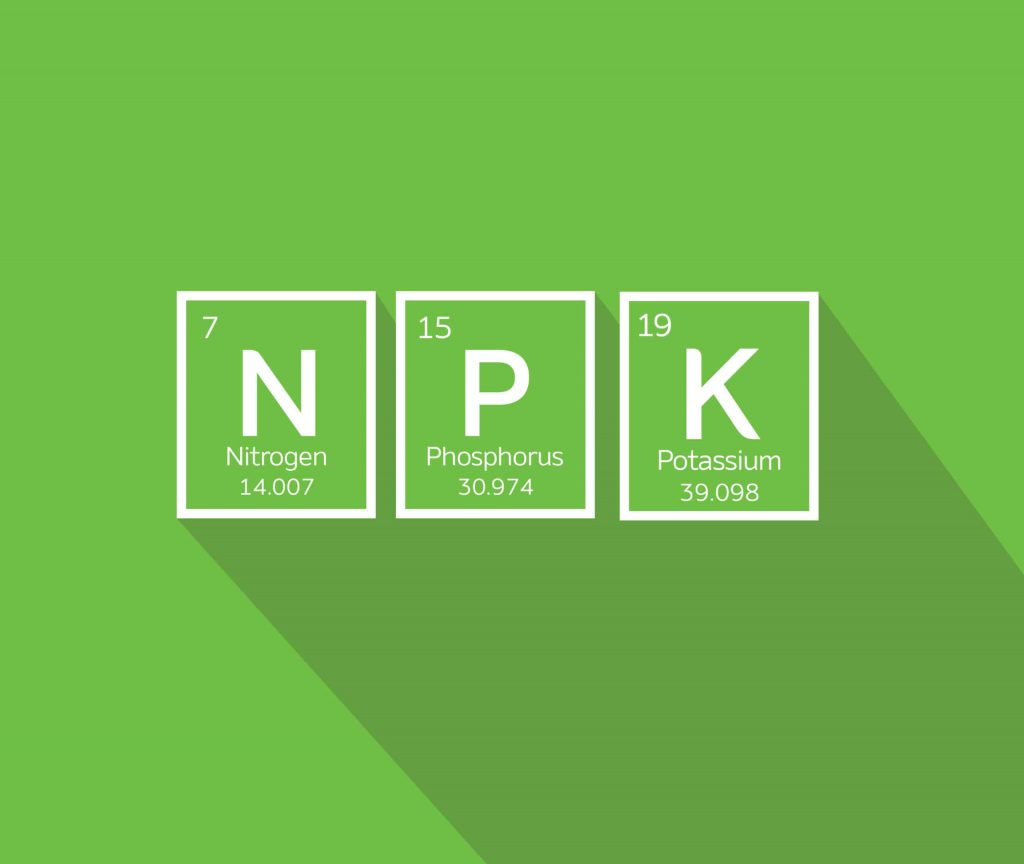What Are Base Nutrients?
A base nutrient, or a base nutrient system, can be described as the main source of plant food given to indoor or outdoor crops throughout the lifecycle of growth and bloom. To beginners, this topic of conversation can appear daunting, especially with the massive selection of nutrient brands and programs available in today’s market. However, the principles of plant nutrition, and the products which seek to promote plant health, are respectively similar in their content. This article, if anything, will simplify the seemingly complicated topic of plant nutrition, and shed light on the contents of “base nutrient” programs.
A Closer Look at Base Nutrients
So what are base nutrients? Like us, plants are only able to digest certain elements throughout their lifecycle; and so, a base nutrient could be described as any liquid or powdered plant food that contains most of, or all of the essential elements for plant health and stability. Although base nutrient systems vary in many ways, most notable in price, brand, and in the number of “parts”, an adequate base nutrient program will contain a well-rounded list of macro and micro-elements, be highly concentrated, and provide your plants with essential minerals throughout periods of growth and bloom. For an explanation of base nutrient parts, read our blog titled: Understanding the Parts of GreenPlanet Nutrients Base Fertilizer Programs.
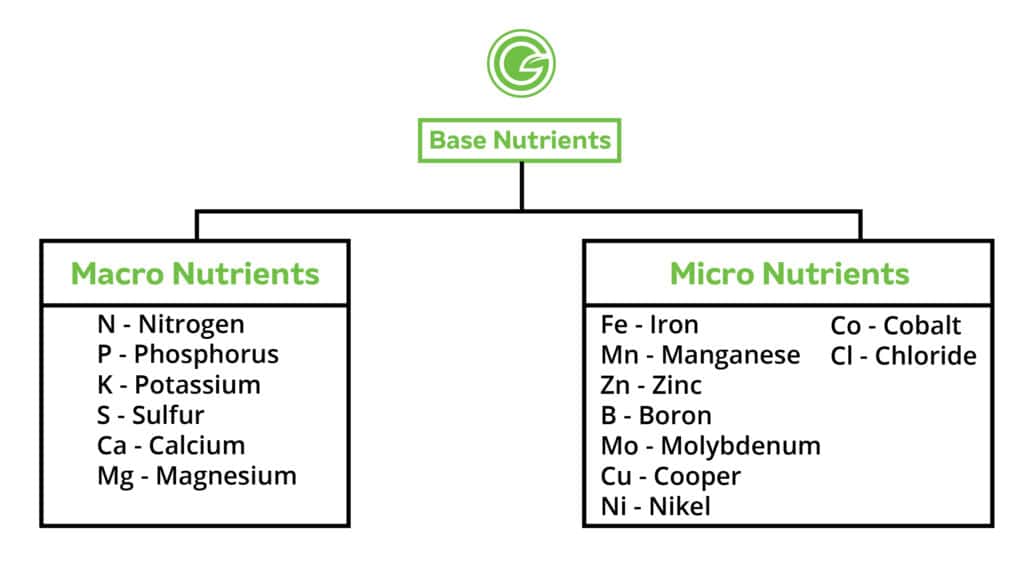
Micronutrients and Macronutrients essential for plant growth
Hassani, 2018, Forestrypedia.com
Macronutrients

The most important elements to consider when choosing a base nutrient is Nitrogen (N), Phosphorus (P), and Potassium (K). Since plant biology has been understood at the molecular level, there has been a general consensus of the importance of these macronutrients; for instance, among other essential elements, Nitrogen is required in the largest quantities, and its availability and internal concentration affect the partitioning of biomass between roots and shoots (Razaq et al, 2015, p. 2). Phosphorus and Potassium, on the other hand, are equally important. From Graham Reinders in-depth book titled, Secrets Of High Yield Plant Growth, the author states the following on the overall significance of Phosphorus and Potassium:
Phosphorus is an energy carrier for hardy plants, and promotes early maturity for good flower, fruit and seed formation. Plants need Potassium to create the proteins that increase oil content which in turn enhance flavour and colour on flowers, fruits and vegetables.
(Reinders, 2001, p. 108)
Micronutrients
Although a solid N-P-K ratio is essential in the formation of a base nutrient program, other elements called “micronutrients”, have an important role to play in a well-rounded base nutrient system. These trace elements, although only available in small amounts, help facilitate a plants healthy metabolism; furthermore, if a plant is lacking a specific micronutrient, deficiencies such as slow or stunted growth, or in some cases, cell death may be observed (Boundless Biology, LibreText, p. 3).
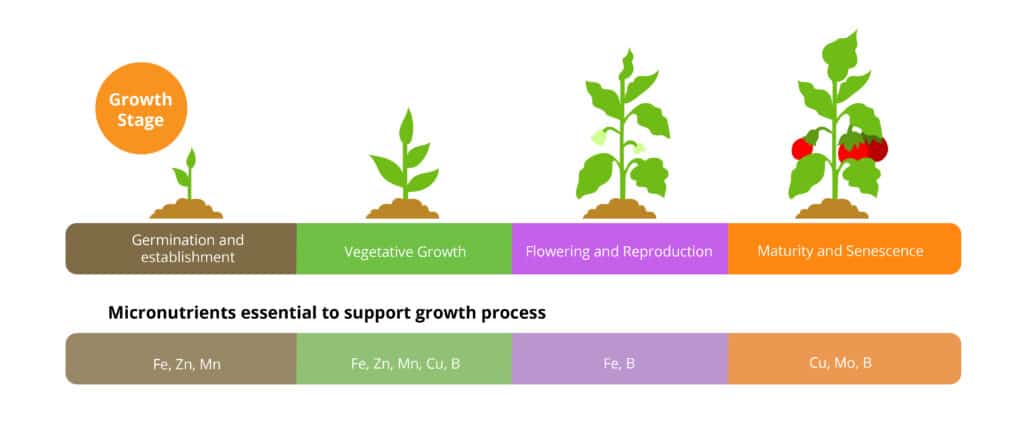
What to Look for in a Base Nutrient Program
If you can grasp a basic understanding of plant nutrition, choosing an appropriate base nutrient program is easy. But in short, when choosing a system of plant nutrition for your garden, make sure that the elements above are listed in well rounded and abundant quantities. Because a base nutrient is your plant’s main source of food, any system worth its weight should provide your garden with an adequate and wide range of elements. To see all available plant elements, refer to the guaranteed analysis.
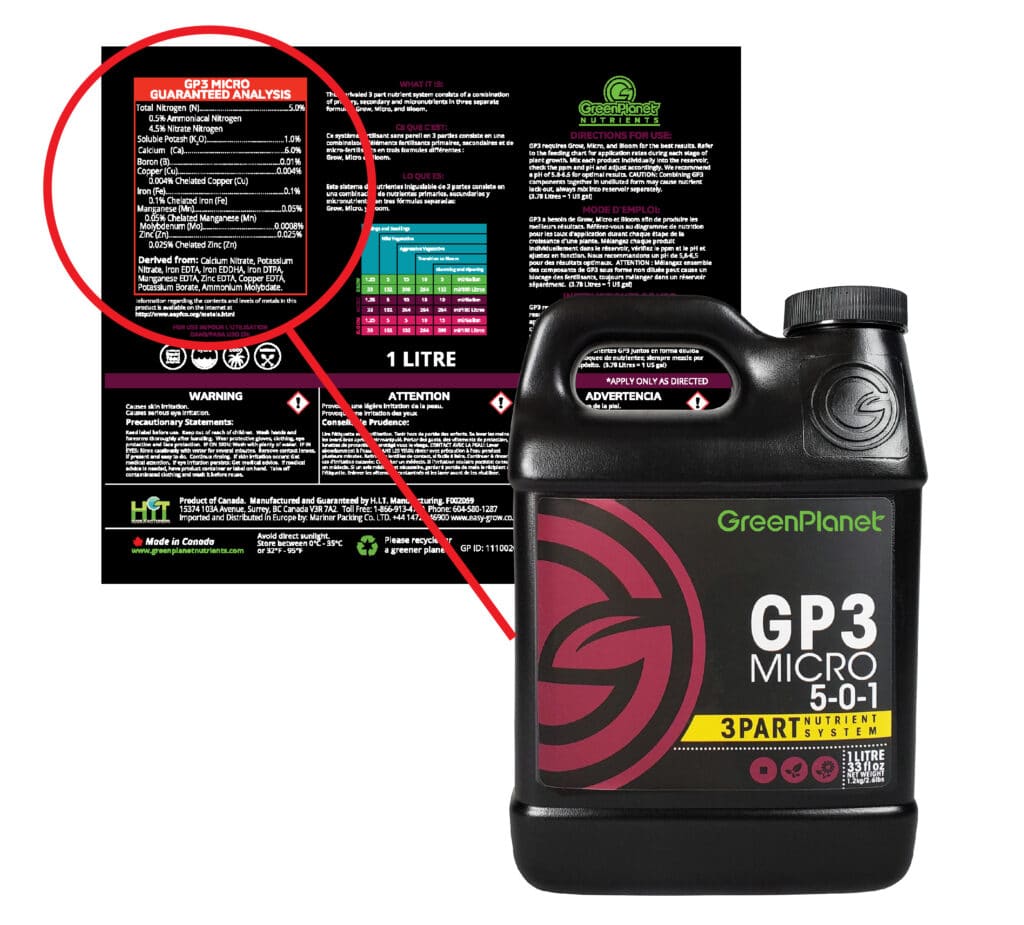
All elements are documented in our Guaranteed Analysis, which can be found on the backs of our GreenPlanet bottles or located on the product tab on our shop page.
The Contents of a Fertilizer
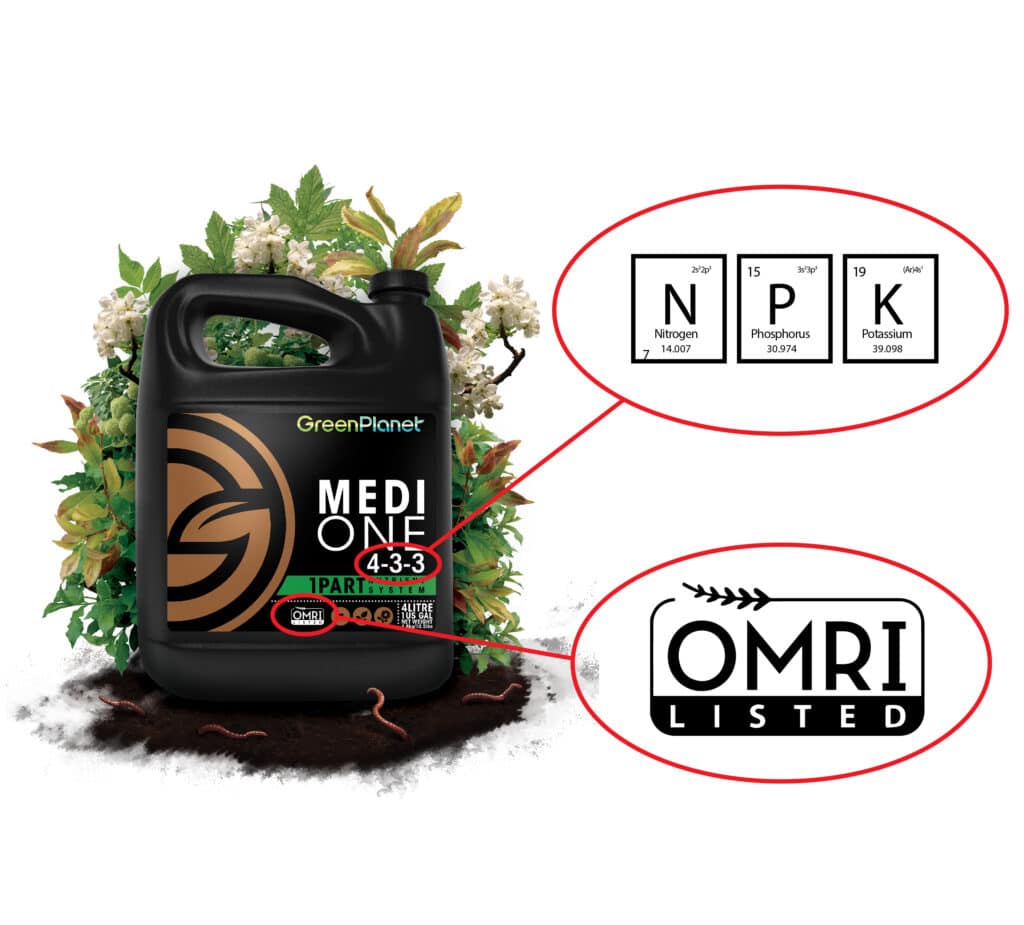
Before purchasing a base nutrient fertilizer, consider the contents of the bottle. For example, our OMRI listed organic base nutrient, Medi One, has a balanced N-P-K ratio of 4-3-3, as well as a host of other important micro-elements like copper, boron, manganese and zinc. If you’re curious about exact quantities of elements in your fertilizer of choice, ratios can be found in the “guaranteed analysis” section of any reputable fertilizer and are usually located on the back of the bottle, or in a peel-back label on the front of the container.
Preferences, Skills and Systems
A few other aspects to consider when purchasing a base nutrient program is the gardening system and your own preferences as a grower. If you have an interest in growing organically, for instance, this preference would narrow the choices of the available base nutrient systems on the market. Conversely, if you happen to operate a hydroponic garden, experts in the field would typically recommend the use of a highly soluble synthetic fertilizer, one which has multiple parts, and in some cases, varying ratios. GreenPlanet’s Dual Fuel system, among other options, is arguably the most popular choice of mineral-based fertilizers which fit the former description of high solubility.
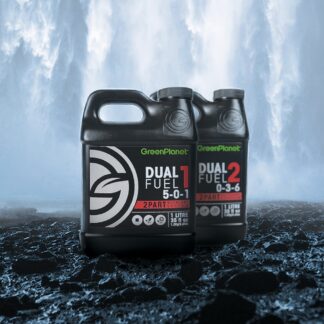
Whatever your style of garden, chances are, GreenPlanet Nutrients has the perfect base nutrient program. To access the programs available at GreenPlanet Nutrients, contact a member of the GreenPlanet sales team, or your local garden supply store for product information and purchasing inquiries.
Works Cited
- Boundless Biology. (2020). Essential nutrients for plants. LibreText
- Hassani, N. (2018). Macro and micronutrients essential for the growth of plants: Flow chart. Forestrypedia.com
- Razaq M, Zhang P, Shen H-l, Salahuddin. (2017). Influence of nitrogen and phosphorous on the growth and root morphology of Acer mono. PLoS ONE.
- Reinders, G. (2001). Secrets of High Yield Plant Growth. Cybo Press.






